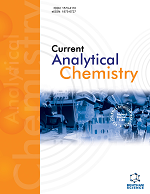
Full text loading...
We use cookies to track usage and preferences.I Understand

This study introduces basil seeds as a novel, low-cost, and environmentally friendly adsorbent for the removal of ciprofloxacin from aqueous solutions. The primary innovation of this work lies in the use of readily available basil seeds, which have not been widely explored for this purpose, to achieve high adsorption capacity and efficiency.
The adsorption process was systematically optimized by adjusting parameters such as time, temperature, pH, and ciprofloxacin concentration, with results showing maximum adsorption at 40 minutes, 70°C, and pH 7. Additionally, the study investigates the influence of interfering factors like competing ions and organic matter in water, providing a more realistic assessment of the material’s effectiveness.
The findings demonstrate that basil seeds offer a promising alternative to conventional adsorbents, presenting both environmental and economic advantages for water treatment applications.
This work significantly advances current knowledge by proposing a sustainable solution for pharmaceutical pollutant removal from contaminated water.

Article metrics loading...

Full text loading...
References


Data & Media loading...